Antoine Fuqua shot his Apple TV+ movie Emancipation in New Orleans, with most of the production schedule calling for location work — usually on the grounds of plantations — which meant cast and crew spent hours and hours at the mercy of the Big Easy’s mercurial weather.
That presented myriad challenges for Andrea Bowman, the film’s Hair Department Head. Bowman, who goes by “Mona” and counts among her dozens of film and TV credits The Great Debaters, The Twilight Saga: Breaking Dawn – Part 2, HBO’s Watchmen series, Lovecraft Country, Women of the Movement, and Young Rock, dealt with braids, curls, wigs, extensions, dyes, and more, all of which had to withstand soaring temperatures and withering humidity.
Oscar winner Will Smith stars in Emancipation as Peter, an enslaved man in the 1860s who escapes from the plantation where he’s been brutally treated and makes his way to freedom before reuniting with his family. Bowman oversaw the hair looks for hundreds of performers, including all of the actors — except for Smith — and the movie’s many extras.
Below the Line recently spoke via Zoom with Bowman, who discussed her entry into the business, her Oscar-shortlisted contributions to Emancipation, and her upcoming projects.
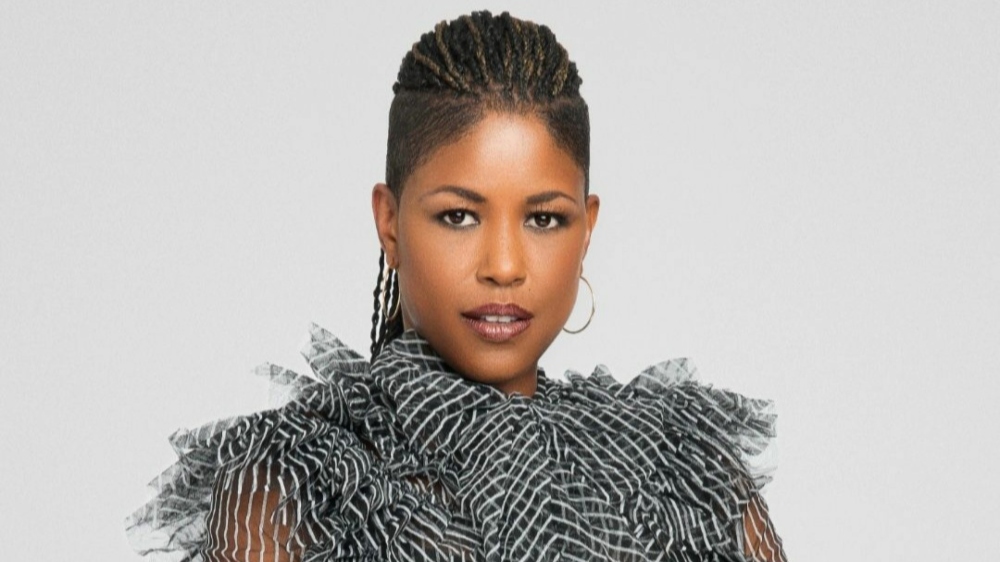
Below the Line: As a little girl, what did you want to be when you grew up?
Andrea “Mona” Bowman: An actress.
BTL: Really?
Bowman: Yes.
BTL: Why, and what changed?
Bowman: Why? I always had a knack for performing. I have a special personality, and I just fell in love with the arts. I started dancing and performing at three years old. I fell in love with movies and TV shows, and my mom nurtured that. As I got a little older, I buried it because my mom didn’t want me to leave Louisiana. I went the other way because she didn’t want me to go to New York or L.A. She was scared. I fell into hair in 7th grade, at 12 years old. My cousin got a bad haircut, and that’s how I got into the hair world.
BTL: When did you start to notice hair in movies and television shows and say to yourself, “If acting doesn’t work out, there may be another way in”?
Bowman: I never did make that connection. I never even knew that they had those types of departments until it came to me when Hurricane Katrina hit. Louisiana had the first tax incentive, and it pushed all the stuff up to my hometown, which is Shreveport, Louisiana. That’s when my cousin was doing low-budget films, and she said, ‘Yeah, they have departments where people do the hair and get them ready.’ I said, ‘What?’ People would always call me “Hollywood,” because, in my city, I was the first one that did extensions, with the long hair and all that stuff. [And] also because I would still perform and do stuff from time to time, like make wigs and other things. Growing up, they always said, ‘You need to be doing stuff in Hollywood.’ I would say, ‘Yeah, that’s cute.’ When Katrina hit, that’s when I realized I could seriously have a possibility of doing this.
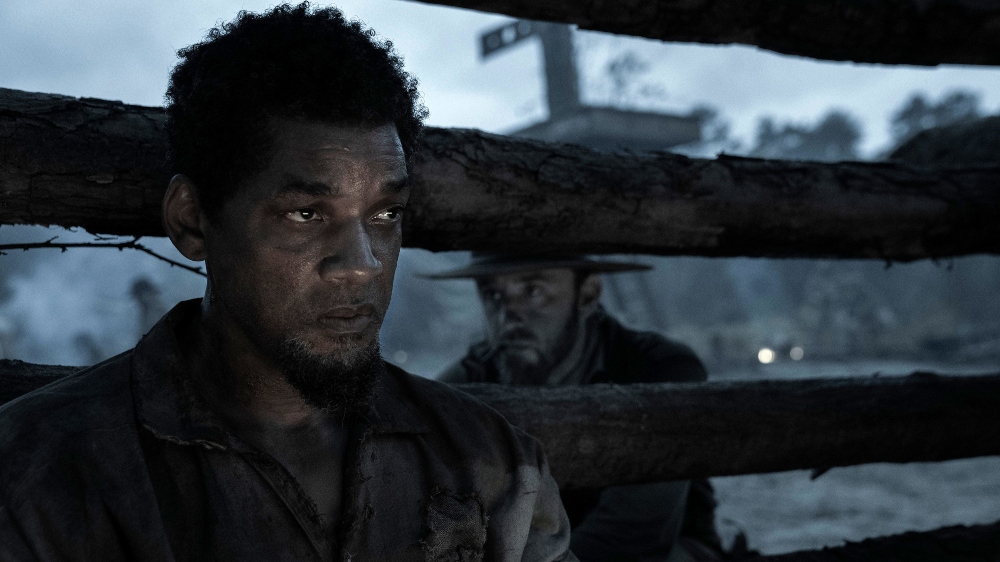
BTL: Who gave you your big break?
Bowman: The guy that gave me my opportunity, his name was Ken Walker, one of the biggest in the industry. He was one of the first African Americans that actually did hair in film. He was in Shreveport doing a film and he got invited by my pastor’s sister-in-law to come to my pastor’s house for Easter Sunday. He was asking my pastor if he knew anybody that was a great hairstylist because he needed local people to work. My pastor said, ‘Oh, I have the best person. She does everybody in the city. I can invite her. She should be coming over.’ I went over and talked to him for 15 minutes. He stopped me and he told me that I was the one, that he was going to give me the chance of a lifetime, and 16 years later, here I am.
BTL: Was that film The Great Debaters?
Bowman: Yes, it was The Great Debaters.
BTL: How did Emancipation come your way?
Bowman: I didn’t think I knew anybody that was attached to it. I had seen on Instagram that Apple had picked it up and also that Will Smith and Antoine Fuqua were connected to it. I was so elated because I’ve known about Peter’s story for years. I always wanted [to work on] his story, because it was special to me, being that I’m from Louisiana. It always touched me because of his endurance [in] going after his freedom. I just thought it would make a great story to tell, because it was real. I prayed. I said, ‘God, if it’s not me, please let the right person do the hair for it,’ because I hate watching films where you can see the wigs [and] they distract you, and you can’t tell the story. I wanted to be that person [that did it right]. Lo and behold, I got a phone call. A producer, Todd Black, had actually put my name in the running, and I was able to get the job.
BTL: Heading into the production, what did Antoine say to you — and the whole hair and makeup team — in terms of his own mission statement? What was he aiming for creatively, and did it sync with what you had in mind?
Bowman: His call to duty was authenticity, and that was mine as well out of the gate. Everybody that was attached, from every department, that was our goal — to make sure when you watch the film, it is seamless and you didn’t see anything that was distracting. My mother described it when she watched it as, ‘like a picture, but it was moving.’ It lured her in. That’s what I wanted when you watched it, and that’s what Antoine wanted as well. His whole goal was to make sure that everything was authentic, and looked seamless.
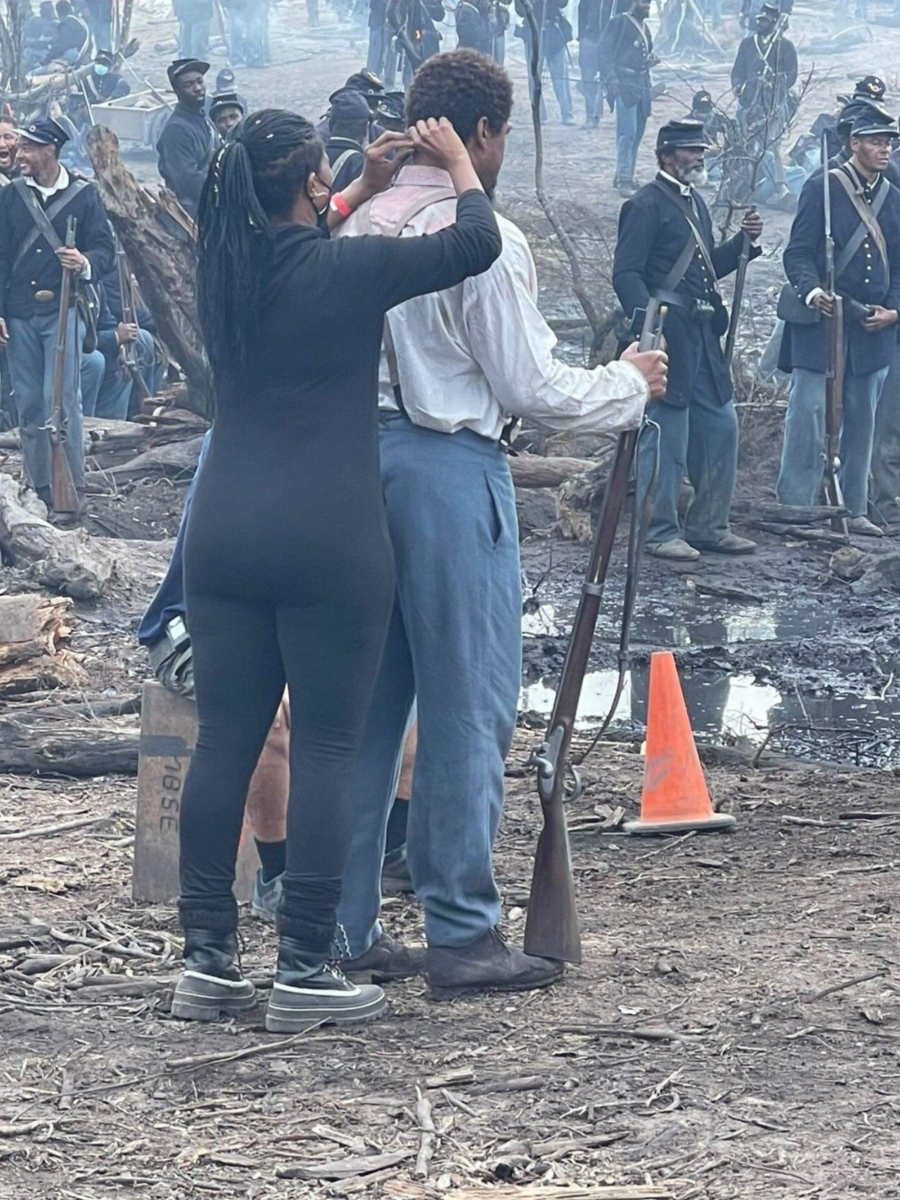
BTL: The movie is a period piece. Portions of it were shot outdoors in extreme heat, and there was a good deal of running and action involved. More than ever now, the camera sees everything and people are watching movies on high-def TVs. How did those factors impact your end of the job when it came to creating authenticity?
Bowman: There were some challenges because of the heat itself and the humidity in Louisiana, because a lot of actors, when they came in, weren’t period-ready. Some of them had hairline edges that could show that they had a current haircut. There were different techniques that I had to develop and teach my team, as well, to be able to layer hair and do different things that we had to do to make it look realistic across the board, once the characters were developed. [But] the biggest thing was the heat.
BTL: What kind of research went into creating historically accurate hairstyles, not just for the enslaved characters, but for the plantation owners and soldiers as well?
Bowman: Once I got the call in February that I had the job. I started then. I’m still deleting photos on my phone. I have over 5,000 photos. That was for everything… every background, secondary actor, stunt guy, and main actor. I had a photo in a book that I made and developed for each look. I wanted everybody to have their own look when you see them. I also wanted to match somebody historically, so I could make sure that they were correct. We researched and researched. The soldiers from the Confederate Army had to be correct because they were different from the Union soldiers. We even researched the different types of textures of hair for the African American slaves and different sharecroppers, with the actual head wraps. When you see the movie and you see the ladies who are on the porch, when the little girl was hollering, “Runner!” — they were French-inspired because the backdrop of that family was told to me by the designer of the costumes. That’s the direction that she and Antoine wanted to go in, so you can see the variation of every subtle detail and change of those time periods [and] of those different types of people and cultures.
BTL: When dealing with lead actors, your job is a combination of doing it to them, for them, and with them. What do you see as your place in their performance, and what kind of collaboration did you have here?
Bowman: I didn’t do Will Smith. That was Pierce Austin, Will has his own personal hairstylist. I did Will’s double, so I had to mimic everything Pierce did. Even with that character, once Pierce and Antoine developed the look, he incorporated it for the double. All of that was coming from different cutting techniques, actually trying to show the levels of his journey. Ben Foster came in once they developed his character. In the beginning, he was going to be shot one way. When it came back, they developed him in another way, and it changed the dynamic of his character. We wanted him to look like that everyday guy. In some of the meetings we already had, they called him “the guy that had to hate,” because he was taught that by his father. You can tell when he was eating alligator, certain programming was pushed on him, and he had to be that dude. We wanted to give him that look of an everyday dude, but we also had actual photos that look like him, even with that texture of hair that he had. It was perfect because his natural hair color is blonde. It worked out even though you can’t really tell because of the depth of the saturation. But you could still tell the difference between him and the other two guys that were chasing Will.
With Charmaine [Bingwa] — with her character — even with the head wraps, and just using her natural hair, I wanted to make sure that it read because of the relationship and the type of strength that Will’s character Peter had. I felt like the type of woman that she would be for him, by him influencing her and giving back to her like he does… he was a humble man, which you see in how he performed those things with her feet and put her first. She would be the type to put extra effort into trying to present herself to her daughter and other children as a mother. That’s why we structured her with her own natural hair. That was another thing. I wanted to make sure that the natural texture of her hair was used. I used her own hair on that one. I did a two-strand twist connection technique that actually gave you… continuity. Also, with the humidity and the heat, because natural hair sometimes will swell, if it’s raining or anything, I always wanted to make sure that I had it structured enough to where it would always read across the board as long as we were shooting.
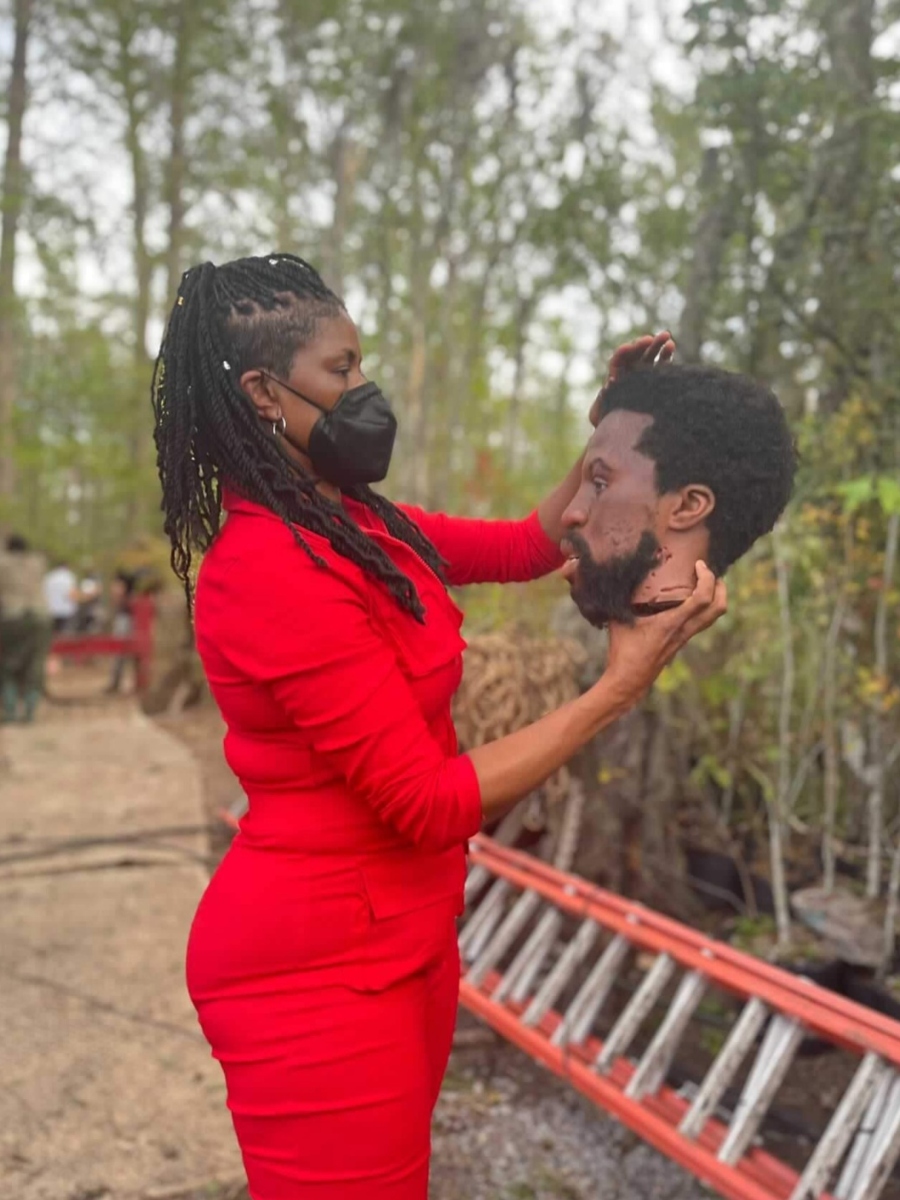
BTL: And how about the first half of that question — the to, for, and with?
Bowman: I would say all three. To them, because when they come in, they’re expecting me to have a certain guideline to be able to develop their characters. For them, because I am their support system in both worlds, [so] I have to connect with the director, the characters, and them as people. I have to make sure all those levels are sealed and properly developed because we want to make sure that the characters are seen, but we also have to understand that the actor is a real person. With them, because we’re all a part of this big family. We had to make sure that everything was authentic and done correctly. So, all three.
BTL: Tell me a bit about your team on Emancipation…
Bowman: I had a very strong team on this one. My Key was Jorge Benitez. My other Key was Christie Caudle, and my other Hairstylist was Daina Daigle. They were very important. They gave me everything that I needed. We would have, on average, for the first six weeks, 300 extras per day. I had to hire an additional 17 local Hairstylists and they ran it like a camp. There were days that we had, outside of the 300 background actors, 30 to 40 stunt guys, and we still had to do the main actors. I had a great core team that supported me in everything. The team was my rock.
BTL: Emancipation wasn’t among the five Oscar nominees for hair and makeup, but it was shortlisted for the award, which is an achievement in and of itself. What would an Oscar nomination or win mean to you one day?
Bowman: It would mean hard work for me because in order to get to where we were in slowly developing these characters and doing this film, to even be put on the shortlist, it was a lot of hard work. That’s what I would say.
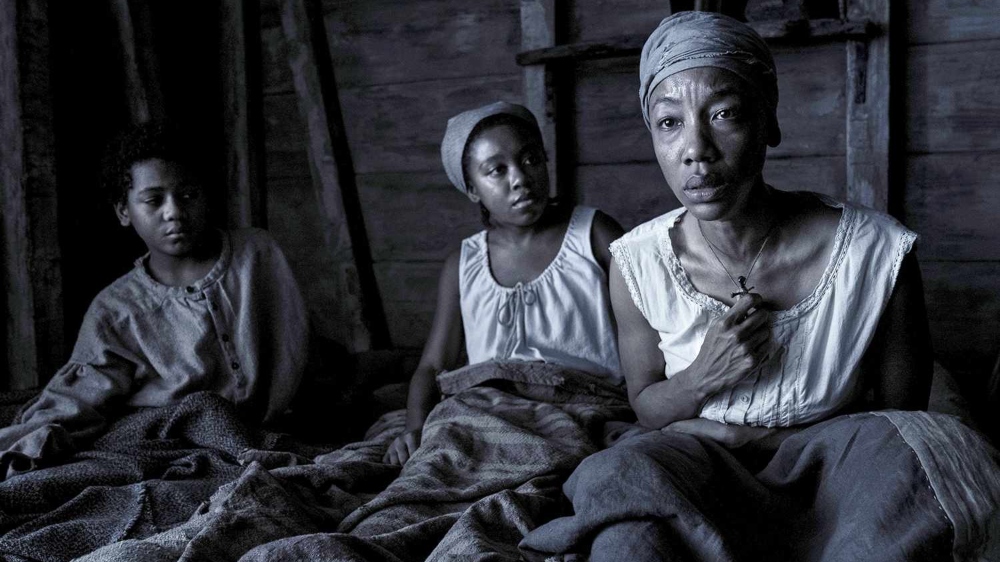
BTL: Your next film is Blitz Bazawule’s The Color Purple. How did that go, and what else are you working on? Young Rock?
Bowman: The Color Purple musical movie is absolutely going to blow minds. It was another hard one, right after Emancipation, but it is definitely going to show a great deal of African American excellence, especially with hair and costumes. It was a real fun one, but a lot of work. I’m also currently working on Young Rock Season 3. I’m going to be the Department Head on that one. I think we’re on Episode 7 now and still have four more.
BTL: Do you miss acting? Do you want to get back into it?
Bowman: I do it from time to time. Sometimes I even get asked to be on shows. Even on Young Rock, they called me in to be an actual hairstylist in a scene. You’ll see my little cameo in the back. I miss it, but I respect what God has given me now. As long as I can develop characters, if I’m in front of the camera or behind it, it doesn’t matter. I just love the whole film industry.
BTL: Let’s jump back to the beginning of the conversation. Initially, your mom didn’t want you to go to Hollywood. What does she think now?
Bowman: She is elated. She’s so happy, and one of my biggest cheerleaders. She said, ‘I wish I would’ve never stopped you. There’s no telling where you would be at this point.’ But I told her everything happened for a reason. She’s a very excited, happy, and proud mother.
Emancipation is now streaming on Apple TV+.





